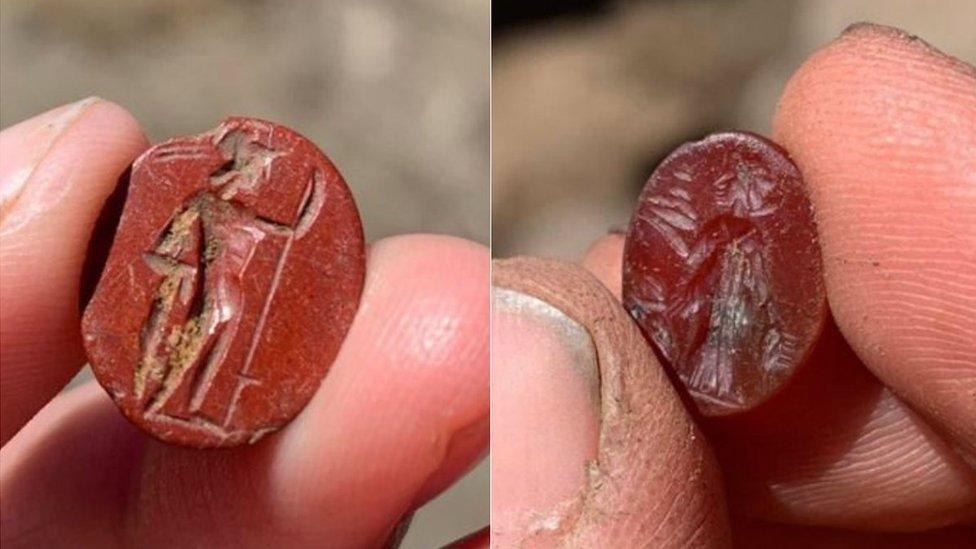Hadrian's Wall: Wooden 'Roman sex toy' found in Northumberland
- Published
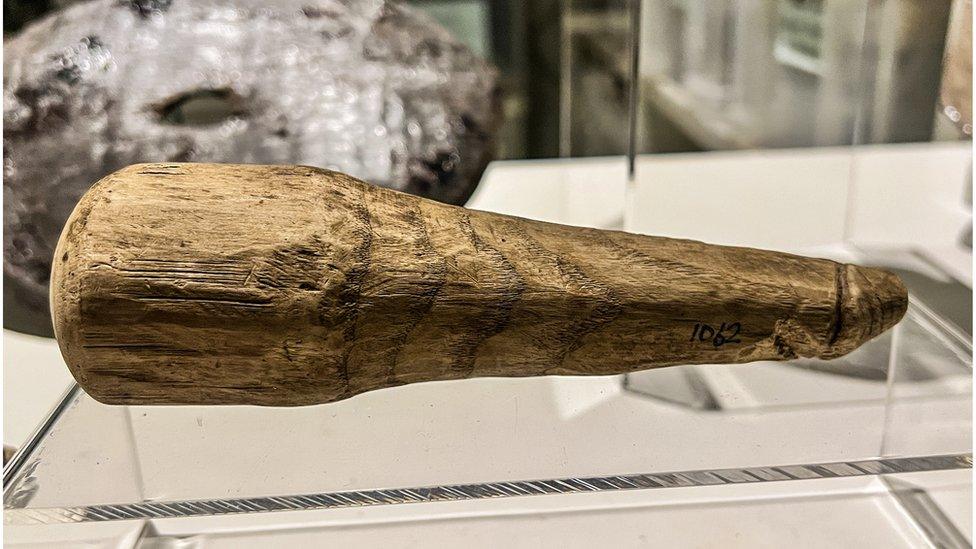
The wooden object was found among dozens of shoes and other accessories in a ditch
A wooden object found at a Roman fort on Hadrian's Wall initially thought to be a sewing tool may have been a 2nd Century sex toy.
Experts say the object, found in a ditch at Vindolanda, may be the earliest example of a wooden phallus found anywhere in the ex-Roman empire.
However, they said they had not ruled out it could have been a good luck symbol or a tool to grind ingredients.
It was first thought to be a darning tool and found with dozens of shoes.
Accessories and other small tools - along with leather off-cuts - were also found with it at the site, near Hexham in Northumberland.
'Smooth at both ends'
However, experts from Newcastle University and University College Dublin say they now believe the object, which measures about 6.2in (16cm), might have had a more intimate use.
When they analysed it they found both ends were noticeably smoother, indicating repeated use over time.
Dr Rob Collins, a senior lecturer in archaeology at Newcastle University, said: "We know that the ancient Romans and Greeks used sexual implements - this object from Vindolanda could be an example of one."
Phalli were commonplace in the Roman Empire as they were believed to offer protection against bad luck.
Many are depicted in art, carved into pottery or small versions - made of bone or metal - were often worn as jewellery pendants.
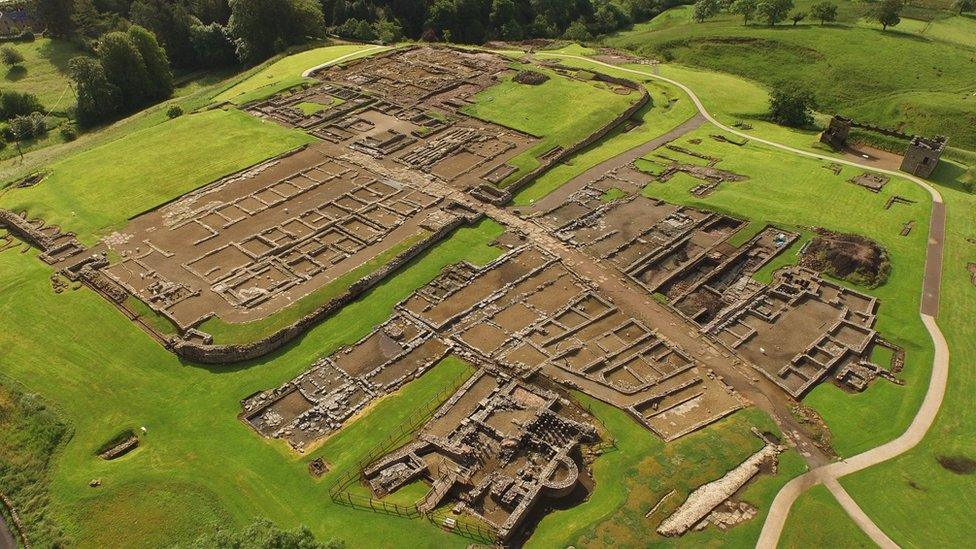
The object has now been put on display at the site, near Hexham in Northumberland
The archaeologists said another possibility was the object was used as a pestle to grind ingredients for cosmetics or medicines, and its shape could have been thought to add perceived magical properties.
Or it could have been slotted into a statue and then rubbed for good luck, they wrote in the journal Antiquity.
Barbara Birley, curator at the Vindolanda Trust, where the object is now on display, said: "The wooden phallus may well be currently unique in its survival from this time, but it is unlikely to have been the only one of its kind used at the site, along the frontier, or indeed in Roman Britain."

Follow BBC North East & Cumbria on Twitter, external, Facebook, external and Instagram, external. Send your story ideas to northeastandcumbria@bbc.co.uk, external.
Related topics
- Published7 January 2023
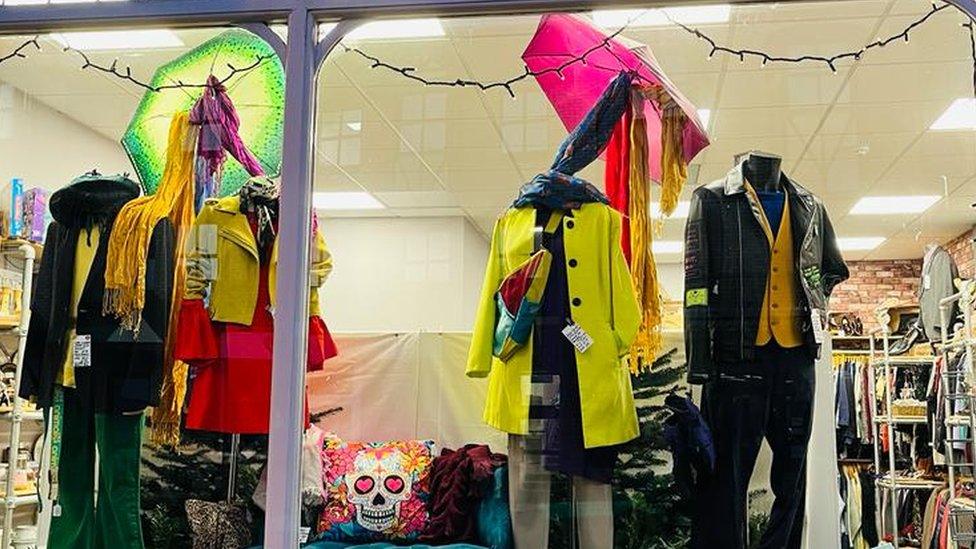
- Published26 May 2022
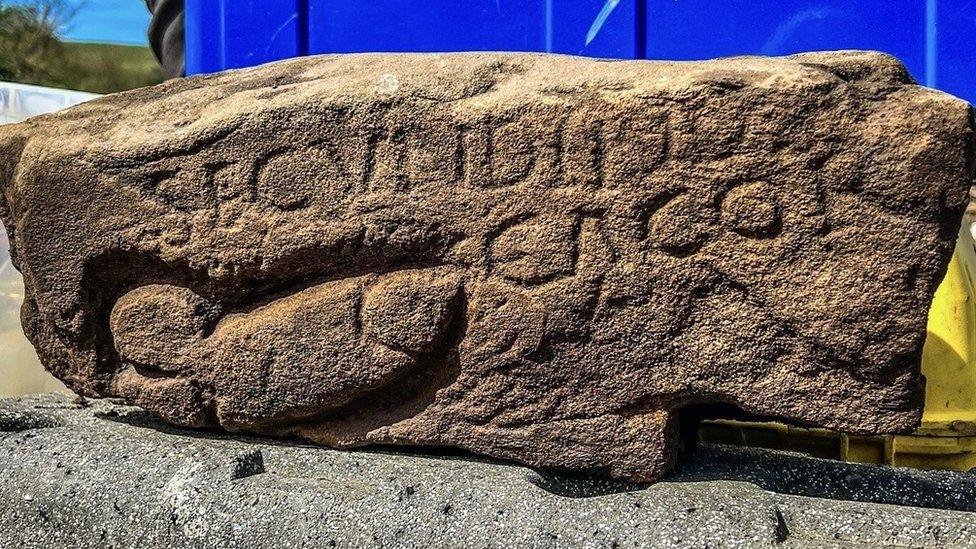
- Published28 June 2021

- Published29 June 2019
